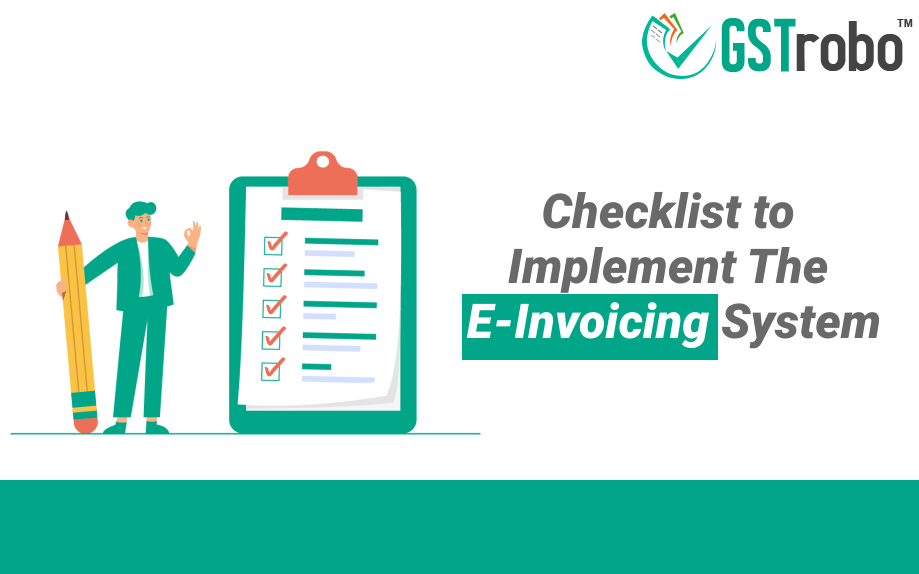Checklist to Implement The E-Invoicing System
Initially, the government covered all the taxpayers whose aggregate turnover exceeded INR 500 crores. Now, as per the recent mandate, the government is implementing e-invoicing for all those taxpayers whose aggregate turnover exceeds INR 20 crores from 1st April 2022 (read more about this here). So, in this blog, we will look into the checklist to implement an e-invoicing system flawlessly.

Checklist to Implement E-Invoicing System
Evaluating the Requirement
You first need to evaluate the requirement of implementing e-invoicing. For this you need to ask these simple questions:
- How soon e-invoicing mandate will cover you?
- Is my current ERP supports e-invoicing software integration?
- If the employees who are handling ERPs well trained to cover all the aspects related to e-invoicing or they need training?
If you ask these questions, you will be able to implement e-invoicing flawlessly.
Note: As per the recent notification issued by CIBIC, all the taxpayers whose aggregate turnover is INR 20 Crores and more need to generate e-invoices from 1st April 2022. We have covered everything related to this notification here.
E-Invoicing Pre-Conditions
Before generating any e-invoice it is important for you to know that there are certain pre-conditions. One such example is the e-invoice schema which is a standard format to produce e-invoices. However, in case if you are hiring any GSP/ASP for implementing the recent mandate, then they will take care of such pre-conditions.
Data Check
It is important for you to check the data at the time of inserting in an e-invoice as the e-invoice data flows in both the GST Portal and e-way bill portal. So, you need to take extra care at the time of entering data or do data checks. In case you choose a GSP/ASP, make sure you ask for data automation that will eliminate the data errors caused due to human intervention.
Picking GSP/ASP
At the time of choosing GSP or ASP you must consider the following points:
- Budget
- Product offered and its functionalities
- Product pricing
- Compliance requirements
- Software support
- ERP integration
ERP Configuration
ERP configuration is the most vital point that you must consider because based on your business type you need to work on optional e-invoice fields in the e-invoice schema. But if you hire GSP or ASP they will configure the ERP as per the business requirement.
Stay Updated
You need to keep updating yourself regarding different GST amendments, notifications, and news if you are the one who is handling all the GST-related work. But there is a cheat for you, you can hire GSP/ASP that will make sure you stay GST compliant.
Train your Staff
Before you implement e-invoicing, it is important you arrange regressive training sessions for your staff, like how to generate e-invoices errorless. If there is an error in an invoice, IRP will reject such an invoice. If you hire GSP/ASP, a trainer or associate will be assigned to train your staff.
QR Code Functionality
You must make sure that the e-invoicing software that you have integrated into your ERP supports QR code functionality as an e-invoice without QR code will be considered null and void. Moreover, you may get penalized or goods/services may get confiscated by the officer due to an invalid e-invoice.
